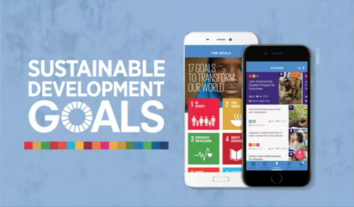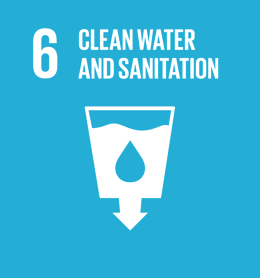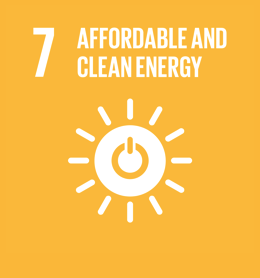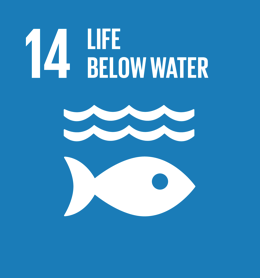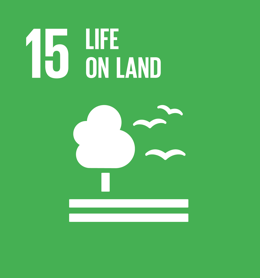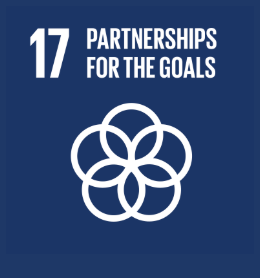In September 2015, 130 global leaders of the United Nations ratified 17 global political goals or “Sustainable Development Goals (SDGs)” as part of the „2030 Agenda for Sustainable Development “, addressing current global challenges. With a 15-year term, the SDGs became effective on January 1st, 2016, and are intended to secure global sustainable, economic, social and ecological development. It is to be noted that while the millennium goals were directed toward less developed countries, the Sustainable Development Goals apply to the entire world.
With its advisory mandates and investments, five elements capital and its partners seek to contribute to the achievement of these valuable and important goals. With our focus on environment, we direct specific attention to seven of the SDG goals (see below). Please note that a project or engagement can support multiple goals. Example: A project which utilizes local organic waste, to produce renewable gas for local heating or power as well as biofertilizer for agriculture, supports SDG 7, 11, 12, 13.
SDG 6: Clean Water and Sanitation
Subsection 6.3: By 2030, improve water quality by reducing pollution, eliminating dumping and minimizing release of hazardous chemicals and materials, halving the proportion of untreated wastewater and substantially increasing recycling and safe reuse globally.
SDG 7: Affordable and Clean Energy
Subsection 7.1: By 2030, ensure universal access to affordable, reliable and modern energy services
Subsection 7.2: By 2030, increase substantially the share of renewable energy in the global energy mix
Subsection 7.3: By 2030, double the global rate of improvement in energy efficiency
Subsection 7.A: By 2030, enhance international cooperation to facilitate access to clean energy research and technology, including renewable energy, energy efficiency and advanced and cleaner fossil-fuel technology, and promote investment in energy infrastructure and clean energy technology
Subsection 7.B: By 2030, expand infrastructure and upgrade technology for supplying modern and sustainable energy services for all in developing countries, in particular least developed countries, small island developing States, and land-locked developing countries, in accordance with their respective programmes of support
SDG 11: Sustainable Cities and Communities
Subsection 11.6: By 2030, reduce the adverse per capita environmental impact of cities, including by paying special attention to air quality and municipal and other waste management
SDG 12: Sustainable Consumption and Production
Subsection 12.2: By 2030, achieve the sustainable management and efficient use of natural resources
Subsection 12.3: By 2030, halve per capita global food waste at the retail and consumer levels and reduce food losses along production and supply chains, including post-harvest losses
Subsection 12.4: By 2020, achieve the environmentally sound management of chemicals and all wastes throughout their life cycle, in accordance with agreed international frameworks, and significantly reduce their release to air, water and soil in order to minimize their adverse impacts on human health and the environment
Subsection 12.5: By 2030, substantially reduce waste generation through prevention, reduction, recycling and reuse
Subsection 12.A: Support developing countries to strengthen their scientific and technological capacity to move towards more sustainable patterns of consumption and production
Subsection 12.B: Develop and implement tools to monitor sustainable development impacts for sustainable tourism that creates jobs and promotes local culture and products
SDG 13: Urgent Action to Combat Climate Change
In the context of this SDG Goal, five elements capital is interested in projects that contribute to a country`s goal to reduce greenhouse gas emissions without threatening food production, in line with Subsection 13.2.:
This means in specific, projects which contribute to the reduction of greenhouse gas emissions or to the sequestration of atmospheric CO2, measured by neutral or negative CO2 footprint on project or product level, validated by scientifically and industry-accepted certification. See our topics.
SDG 14: Life Below Water
Subsection 14.1: By 2025, prevent and significantly reduce marine pollution of all kinds, in particular from land-based activities, including marine debris and nutrient pollution
Subsection 14.2: By 2020, sustainably manage and protect marine and coastal ecosystems to avoid significant adverse impacts, including by strengthening their resilience, and take action for their restoration in order to achieve healthy and productive oceans
Subsection 14.3: Minimize and address the impacts of ocean acidification, including through enhanced scientific cooperation at all levels
SDG 15: Life on Land
Subsection 15.1: By 2020, ensure the conservation, restoration and sustainable use of terrestrial and inland freshwater ecosystems and their services, in particular forests, wetlands, mountains and drylands, in line with obligations under international agreements
Subsection 15.2: By 2020, promote the implementation of sustainable management of all types of forests, halt deforestation, restore degraded forests and substantially increase afforestation and reforestation globally
Subsection 15.3: By 2030, combat desertification, restore degraded land and soil, including land affected by desertification, drought and floods, and strive to achieve a land degradation-neutral world
Subsection 15.5: Take urgent and significant action to reduce the degradation of natural habitats, halt the loss of biodiversity and, by 2020, protect and prevent the extinction of threatened species
Subsection 15.7: Take urgent action to end poaching and trafficking of protected species of flora and fauna and address both demand and supply of illegal wildlife products
SDG 17: Global Partnership for Sustainable Development
Goal 17 seeks to strengthen global partnerships to support and achieve the ambitious targets of the 2030 Agenda, bringing together national governments, the international community, civil society, the private sector and other actors.
